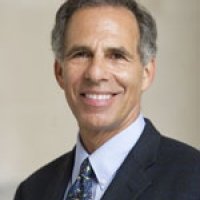Political Demography: How Population Changes Are Reshaping International Security and National Politics
“The world’s population is changing in ways that are historically unprecedented,” said Jack Goldstone, George Mason University professor and co-editor of the new book, Political Demography: How Population Changes Are Reshaping International Security and National Politics.
The volume is “a watershed event for a diverse, dynamic, and challenging field,” said ECSP Director Geoff Dabelko at a launch event hosted by the Wilson Center on January 10. The book seeks to meet policymakers’ increasing demands for the insights demography can provide about the challenges ahead. Political Demography is a timely effort to define the field during what co-editor Eric Kaufmann called “a period of unprecedented demographic disparity.” At the Wilson Center, Goldstone and Kaufmann were joined by contributors Mark Haas of Duquesne University and Elizabeth Leahy Madsen of Futures Group International.
Great Power Aging and the Future of American Power
“Due to steep declines in fertility rates [and] significant escalation in life expectancies, all of the current great powers of the world are aging—many of them at a very fast rate,” said Haas.
As labor pools shrink and welfare spending increases, the economies of the traditional great powers – Britain, France, Germany, Russia, China, Japan, and the United States – may slow. In Japan and Russia the workforce is expected to shrink by more than 30 percent by 2050. The German workforce is predicted to decline by 25 percent. Even China, the most populous country in the world, will see a probable loss of almost 20 percent of its working-age population, likely blunting its meteoric economic rise.
“Governments are going to have to find hundreds of billions of dollars in order to meet their commitments to the elderly,” said Haas. At current entitlement levels, these commitments will consume more than a quarter of national GDP in France, Japan, and Germany by 2040.
As aging developed economies struggle to grow, the diversion of funds from military to social spending (what Haas calls “guns vs. canes”) will likely shift national security priorities. Technology and procurement budgets will decrease while personnel costs and pension responsibilities absorb relatively larger pieces of the defense spending pie, said Haas.
However, Haas is optimistic about the long-term primacy of American power. The United States’ ability to act unilaterally may become a prominent asset, he said, as falling defense budgets among traditional allies limit “burden-sharing.” Additionally, the United States has the option of “off-shore balancing” – re-assigning soldiers from Cold War-era overseas bases – which might help mitigate rising costs. And, alone among the great powers, America will benefit from an expected 17 percent increase in its labor force by 2050, according to Haas.
Demographically, “America is in the worst shape of any country – except for every other,” he said.
Providing for Today’s Youth
Ninety percent of the world’s youth live in developing nations, said Goldstone, they are “eager to learn, eager to join the global marketplace, and a great potential resource.” However, “a youth cohort that is either not effectively educated for marketable employment or not effectively socialized and integrated into mainstream political and social life is a youth cohort that tends to be frustrated and seeking other outlets,” he said.
Research by Henrik Urdal of the Peace Research Institute Oslo, included in the volume, shows that societies have a greater chance of violent instability when large cohorts of youth have difficulty finding employment and integrating into mainstream life. Such groups also tend to exist in the most fragile of states, where governance is poor and governments struggle to resolve societal conflicts, said Goldstone.
Although a youthful age structure may exacerbate existing stressors within a society, an abundance of youth may also bring economic opportunity. Plentiful labor, falling dependency ratios, and increased national savings saw an economic boom during the 1990s among the East Asian “tigers” like South Korea and Taiwan. This “demographic dividend” was fostered by policies that ensured free markets and investments in youth. (Editor’s note: See Goldstone’s work in ECSP Report 13 for more on the political and economic consequences of population change at a global level.)
“I think what we’re seeing is a kind of virtuous and vicious circle,” Goldstone said. “Where government is weak, ineffective, doesn’t provide education, [and] doesn’t provide security, it’s advantageous—both for individuals and groups—to have larger families. It’s a way of investing in themselves.” In contrast, “a government that’s able to provide education, provide security of property, and encourage investment” leads to reduced birthrates and less strain on government services, he said. Thus, the capacity of government to provide for a growing population can be diminished by the sheer rate at which that growth occurs.
Intrastate conflicts in sub-Saharan Africa, the Middle East, and South Asia are the dominant form of political violence in the modern world, said Goldstone. Addressing these conflicts requires a focus on demography and concerted policy action towards two ends, he said: action to provide today’s youth with opportunities to become productive adults, and action to strengthen governance where those youth live.
Demography in Religiously and Ethnically Divided Societies
“Uneven demographic transitions between ethnic and religious groups within a country can lead to a change in the population mix,” said Kaufmann, which can shift electoral politics. While such demographic changes do not automatically result in social conflicts, where identity boundaries are tight and there is little intermarriage or assimilation between groups, these shifts may lead to violence, he said.
Northern Ireland’s history of divisive religious troubles, where Protestant leader Terence O’Neill once proclaimed that “the basic fear of Protestants in Northern Ireland is that they will be outbred by the Roman Catholics,” was cited by Kaufmann as a typical example of how demography can become a competition in a divided society.
More recent cases include the growing gulf between secular and ultra-orthodox groups in Israel, the emergence of a strong Islamist constituency in post-autocratic states affected by the Arab Spring, and the increasing importance of Hispanic voters in several key states for American politics.
Intrastate demography has the capacity to reshape political life and to inform our own forecasts of the future, said Kaufmann. “As societies modernize, fertility becomes a matter of choice…and so values are playing a bigger role in driving fertility and population growth,” he said.
Linking Political Demography and Policy
“Demography is more and more on the policy agenda,” said Madsen, and the diversity and novelty of the field requires a close connection between academics and policymakers. Demography and policy influence each other, she continued, so it is important to understand how governments perceive their own demographic issues and how these issues are integrated into national level policies. (Editor’s note: Read Madsen’s country profiles on the history of building political commitment to family planning on New Security Beat.)
“The question is whether demographic trends are met with sufficient resources,” said Madsen. “Young people coming into adulthood can be a tremendous resource for their countries…but in too many countries…they face an environment with very few viable opportunities to support themselves and their families.” States active in supporting investment in education and human resources, while promoting women’s empowerment and reproductive health as a human right, will stand to benefit both economically and socially, she said. Above all, young men and women must be seen as an asset to their society, argued Madsen.
In Rwanda, the government’s focus on demographic sustainability has helped contraceptive use among married women jump from 13 percent to 45 percent in less than 20 years—and maternal mortality to reduce by half. In contrast, neighboring Uganda, which has the world’s youngest age structure, has seen fertility decline less than 10 percent since the 1980s. At this rate, said Madsen, Uganda will require 1.5 million new jobs every year by the late 2030s for its expanding population (and only about 100,000 new jobs were created in 2009).
“Fertility trends, frankly, are driven by women [and] by their degree of empowerment…too often these are issues easily brushed aside, deemed too sensitive or peripheral to more pressing political concerns,” said Madsen. Yet, she argued, a cogent set of policies for improving reproductive health, education, and women’s empowerment is key to improving development, environment, health, and security across the globe.
Drafted by Stuart Kent, edited by Schuyler Null and Meaghan Parker.
Speakers

Virginia E. and John T. Hazel Professor of Public Policy, George Mason University; Wilson Center Fellow

Hosted By

Environmental Change and Security Program
The Environmental Change and Security Program (ECSP) explores the connections between environmental change, health, and population dynamics and their links to conflict, human insecurity, and foreign policy. Read more
